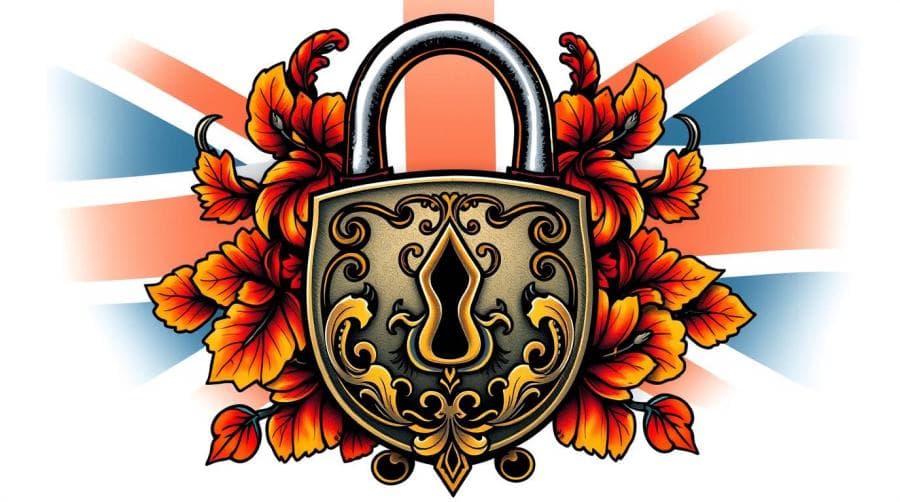Understanding British Standard Locks: A Guide to BS3621 and What It Means for Your Home Security

If you're a homeowner in the UK, you may have heard about British Standard locks, particularly the BS3621 certification. This standard is often mentioned by insurance companies and locksmiths, but what exactly does it mean for your home security, and why is it so important?
What is BS3621?
BS3621 is a security standard developed by the British Standards Institution (BSI) that applies to thief-resistant locks. The standard specifies the performance requirements that locks must meet to be considered secure against common burglary techniques.
For a lock to achieve BS3621 certification, it must:
- Be secure against drilling, picking, and bumping
- Have a minimum of 1,000 key differs (unique key combinations)
- Feature a deadlocking mechanism
- Require a key to unlock from both sides (meaning it cannot be opened by reaching through a nearby broken window)
- Pass rigorous testing for durability, including a minimum of 100,000 operational cycles
Why British Standard Locks Matter for Home Insurance
One of the primary reasons BS3621 locks are important is that many UK insurance companies require them for home insurance policies. Here's why:
- Insurance companies view BS3621 locks as a minimum security requirement for external doors
- Properties without British Standard locks may face higher premiums
- In the event of a break-in, claims may be refused if adequate locks were not installed
- Some policies specifically state that all final exit doors must be fitted with a BS3621 lock
Important: Always check your insurance policy documentation for specific requirements regarding locks and security. Requirements may vary between insurance providers.
How to Identify a British Standard Lock
If you're unsure whether your locks meet the BS3621 standard, look for these indicators:
- The BSI Kitemark. This is a distinctive symbol (a heart shape with a 'B' on the left and an 'S' on the right) that appears on certified products.
- The BS3621 marking. This should be visible on the faceplate of the lock or on the key.
- The year of certification. For example, "BS3621:2007+A2:2016" indicates that the lock meets the 2007 standard with amendments made in 2016.
If you cannot find these markings, it's likely that your lock does not meet the British Standard requirements.
Common Types of British Standard Locks
Several types of locks can achieve BS3621 certification:
1. Mortice Deadlocks
These are installed within the body of the door and feature a bolt that extends into the door frame. A 5-lever mortice deadlock is the most common BS3621 certified lock found in UK homes.
2. Night Latches (Yale Locks)
While standard night latches do not meet BS3621, there are BS3621 certified versions available that incorporate additional security features like deadlocking capabilities.
3. Multi-point Locking Systems
Common on uPVC and composite doors, these systems secure the door at multiple points along the frame. Many are manufactured to BS3621 standards.
4. Euro Cylinder Locks
These are typically used with multi-point locking systems. To meet BS3621, they must have anti-snap, anti-pick, and anti-drill features.
Upgrading to British Standard Locks
If your current locks don't meet the BS3621 standard, consider upgrading for these reasons:
- Enhanced security against burglary attempts
- Potential reduction in home insurance premiums
- Peace of mind knowing your locks meet rigorous security standards
- Compliance with insurance policy requirements
When upgrading, remember these important points:
- Professional installation is recommended. Improper installation can compromise the security of even the best locks.
- Consider the door and frame. Even the strongest lock will be ineffective if installed on a weak door or frame.
- Keep documentation. Retain receipts and certification details to provide to your insurance company if needed.
The Evolution of British Standard Locks
The BS3621 standard has evolved over the years to address new burglary techniques and technological advancements:
- BS3621:1980 - The original standard
- BS3621:1998 - Updated to include resistance to newer picking techniques
- BS3621:2004 - Enhanced requirements for resistance to drilling
- BS3621:2007+A2:2016 - Current standard with additional security features
This evolution demonstrates the ongoing commitment to maintaining high security standards for UK homes.
Need to Upgrade Your Locks to BS3621?
Browse our directory of verified locksmiths across the UK who specialize in British Standard lock installation.
Find a LocksmithBeyond BS3621: Other Relevant British Standards
While BS3621 is the most commonly referenced standard, there are others worth knowing about:
- BS8621 - Similar to BS3621 but allows keyless egress (emergency exit without a key)
- BS10621 - Offers the security of BS3621 but with the option to disable the need for a key to exit
- PAS 24 - A standard for complete door assemblies rather than just the lock
- Secured by Design - A police initiative that includes locks exceeding BS3621 requirements
Conclusion
British Standard locks are an essential component of home security in the UK. Understanding what BS3621 certification means helps you make informed decisions about protecting your property and complying with insurance requirements. If your home doesn't currently have British Standard locks, consulting with a professional locksmith about upgrading is a worthwhile investment in your security and peace of mind.
Remember that locks are just one part of a comprehensive home security strategy. Consider them alongside other measures such as proper lighting, window security, and potentially an alarm system for complete protection.
Related Articles
Lost Your Keys in London? Emergency Solutions When You're Locked Out of Your Flat
Practical advice for what to do when you're locked out of your home in London
Smart Locks for UK Properties: Are They Worth It for British Weather and Security Standards?
An evaluation of smart lock technology for British homes